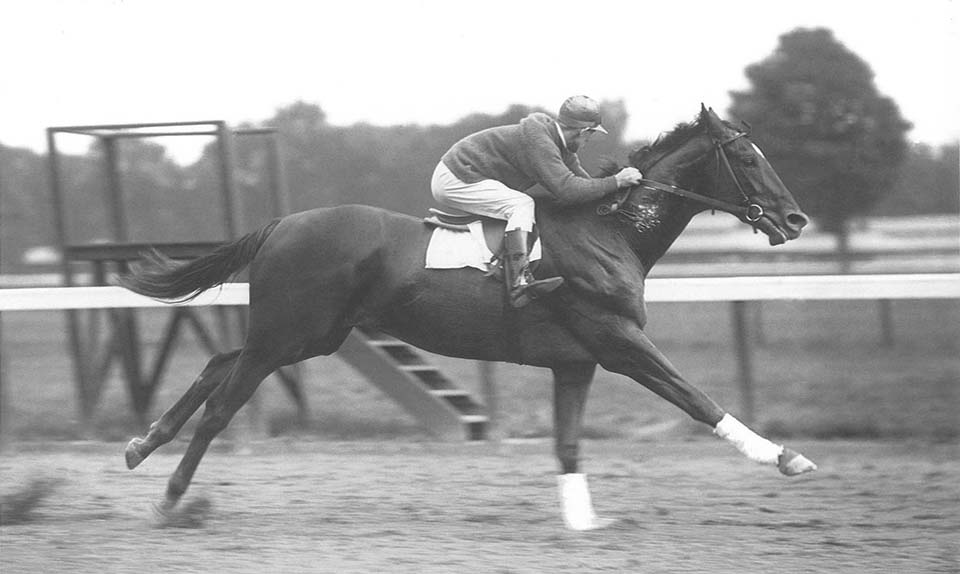Preakness Stakes 2021: Lineup, Odds and Contenders
To many, post positions aren’t as big of a factor in the Preakness Stakes as they are in the Kentucky Derby, mostly due to a smaller field size but the truth is they matter at least as much, if not more.
The most successful starting position since 1909 has been post number six. It has produced a total of 16 winners since then, most recently Oxbow in 2013. Strangely enough, the only gate to produce multiple winners over the past 12 years is number seven —Big Brown in 2008, Lookin at Lucky in 2010 and Justify in 2008. Last year Swiss Skydiver won from post position four to bring that spot’s record to 12 winners from that post.
And up until the past few years, inside positions hadn’t been terribly favorable. Unlike the Derby, the risk of the inside runners being inhibited by the inside rail isn’t as significant, but history overall has shown runners on the inside tend to struggle more. Both War of Will in 2019 ago and Justify in 2018 broke from the innermost post position, but before that it hadn’t produced a winner since Tabasco Cat in 1994. Before Cloud Computing won from post position two in 2017, the last winner from that slot was Snow Chief in 1986.
The outside post positions, numbers nine through 12, have produced six winners over the past 20 years.
A total of 16 of the last 23 Preakness Stakes winners have been named champion 3-year-old male at the annual Eclipse Awards, the most recent being Triple Crown winner Justify in 2018. Last year’s Preakness Stakes winner Swiss Skydiver was honored with the Eclipse Award as champion 3-year-old female last year, too.
The 13 other most recent Preakness Stakes winners to be named 3-year-old champion are: Real Quiet (1998); Charismatic (1999); Point Given (2001); War Emblem (2002); Funny Cide (2003); Smarty Jones (2004); Afleet Alex (2005); Bernardini (2006); Curlin (2007); Big Brown (2008); Lookin At Lucky (2010); I’ll Have Another (2012); California Chrome (2014); and American Pharoah (2015).
Neither Preakness winner Oxbow (2013) nor Cloud Computing (2017) were included in the three finalists for the division’s Eclipse Award the year they won. The filly Rachel Alexandra (2009), who became the first filly since Nellie Morse (1924) to win the Preakness Stakes, was named both Horse of the Year and champion 3-year-old filly honors in the year she won the Preakness. She also defeated the boys when she won that year’s Haskell Invitational (G1) and Woodward Stakes (G1). She was 18th Preakness winner to earn Horse of the Year.
Related:The Field For The 146th Preakness Stakes: Picks, Odds and Contenders
Preakness/Eclipse Champions since 1937
From 1936-1970 American champions were named by the Thoroughbred Racing Associations (TRA) and The Daily Racing Form (DRF). In 1971 The Daily Racing Form, the National Turf Writers’ Association (NTWA)and the Thoroughbred Racing Associations formed the Eclipse Awards. No champions were named prior to 1936.)
1937 War Admiral
1939 Challedon
1940 Bimelech
1941 Whirlaway
1942 Alsab
1943 Count Fleet
1946 Assault
1948 Citation
1949 Capot
1950 Hill Prince
1953 Native Dancer
1955 Nashua
1957 Bold Ruler
1958 Tim Tam
1961 Carry Back
1964 Northern Dancer
1965 Tom Rolfe
1967 Damascus
1970 Personality
1971 Canonero II
1973 Secretariat
1974 Little Current
1977 Seattle Slew
1978 Affirmed
1979 Spectacular Bid
1981 Pleasant Colony
1986 Snow Chief
1987 Alysheba
1988 Risen Star
1989 Sunday Silence
1991 Hansel
1993 Prairie Bayou
1997 Silver Charm
1998 Real Quiet
1999 Charismatic
2001 Point Given
2002 War Emblem
2003 Funny Cide
2004 Smarty Jones
2005 Afleet Alex
2006 Bernardini
2007 Curlin
2008 Big Brown
2009 Rachel Alexandra (*filly Eclipse Award winner)
2010 Lookin at Lucky
2012 I’ll Have Another
2014 California Chrome
2015 American Pharoah
2018 Justify
2020 Swiss Skydiver (*filly Eclipse Award winner)
Preakness Stakes 2021 Contenders
Miscellaneous Preakness Trivia
Two people have both ridden and saddled Preakness winners — Louis J. Schaefer won the 1929 Preakness aboard Dr. Freeland and in 1939 he saddled Challedon to victory. Hall of Fame jockey Johnny Longden won the 1943 Preakness aboard Count Fleet and saddled Majestic Prince for the victory in 1969.
In all, 101 winners of the Preakness from 146 races have been Kentucky-breds. Maryland is next with eight winners, then Florida (seven), Virginia and Pennsylvania (six each), California (five), New Jersey (four), New York (three) and Tennessee (two), and Texas and Ohio (one each). Canada and the United Kingdom have been represented by one winner each.
More than half of all Preakness winners have been bay — 76 of 145. Chestnut is the next most successful coat color represented with 49 winners. There have been 15 brown Preakness winners, two blacks and three grays. Silver Charm, the 1997 winner, was listed as gray/roan.
When Bodexpress entered the 2019 Preakness, he was attempting to become the first maiden to win the Preakness since 1888. According to Allan Carter, former historian at the National Museum of Racing and Hall of Fame, the Preakness was won six times by maidens prior to 1900. They were: Survivor (1873), Culpepper (1874), Shirley (1876), Cloverbrook (1877), Saunterer (1881), and Refund (1888).
Miriam Lee has always been a horse racing fan thanks to trips to the tracks in her home state of Maryland with her father as kid. She owns an OTTB and is an advocate for promoting the sport among her peers. Miriam studies communication arts at Hood College and will receive her master’s degree in 2021, which she plans to use for a career in screenwriting. Her all-time favorite racehorse is Man O War.



